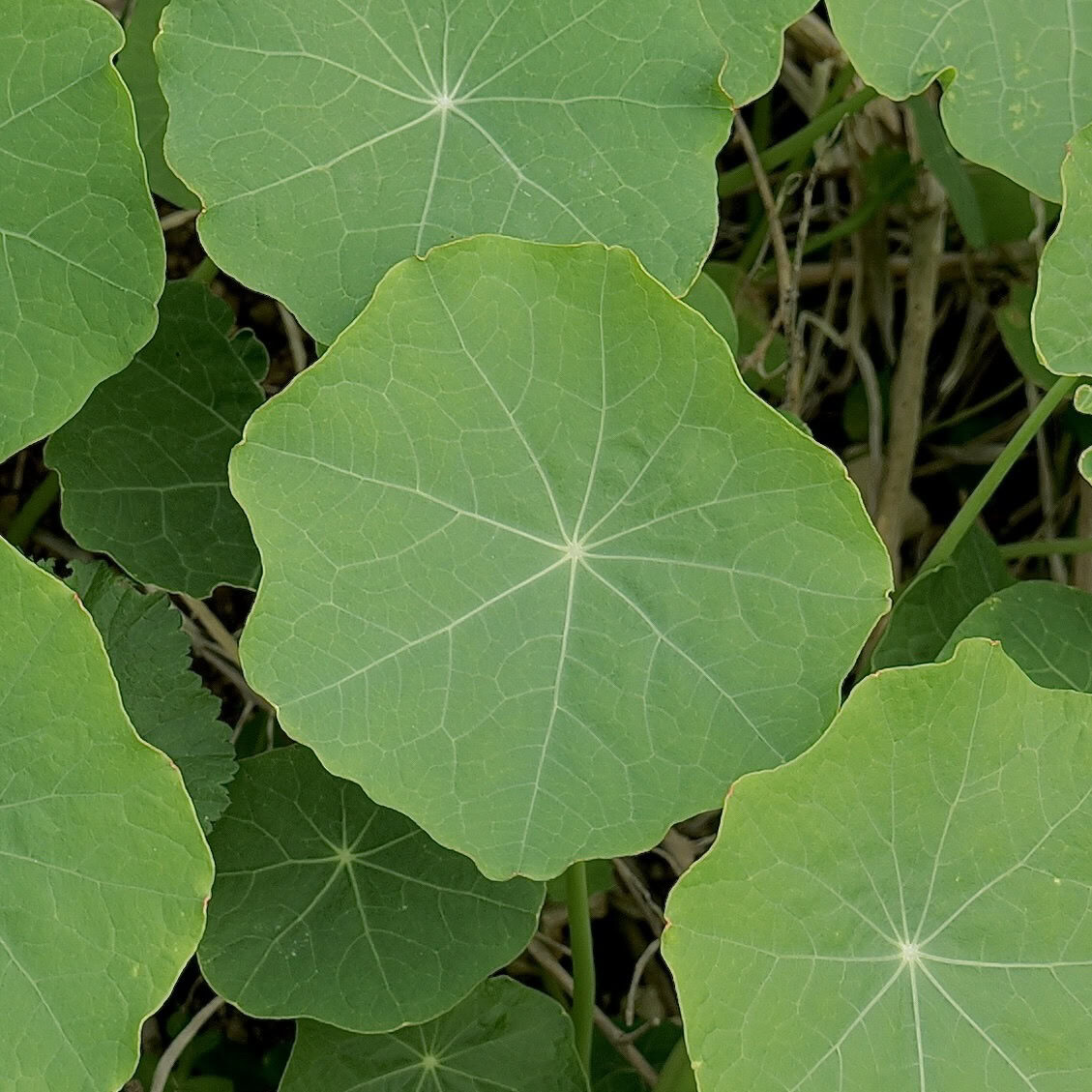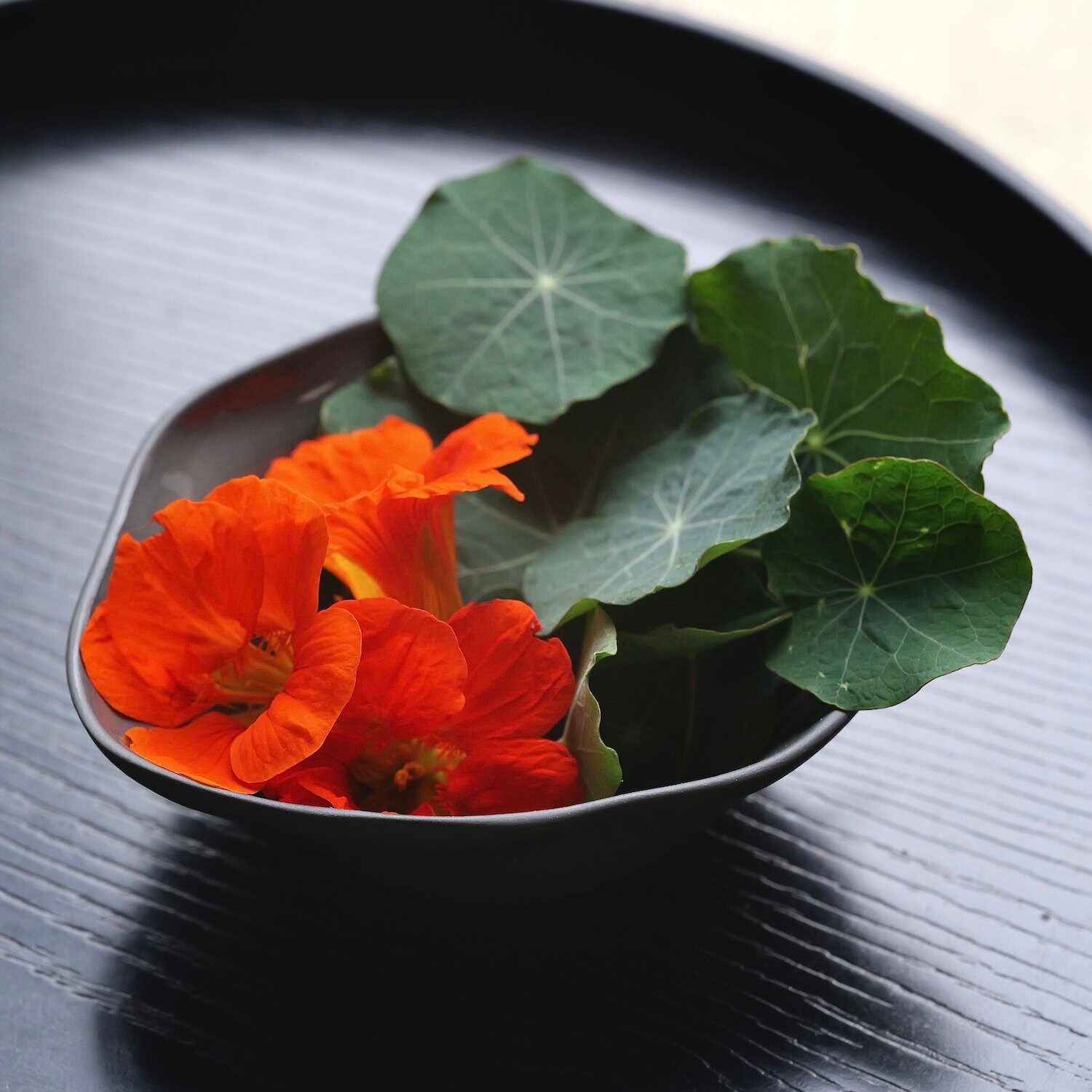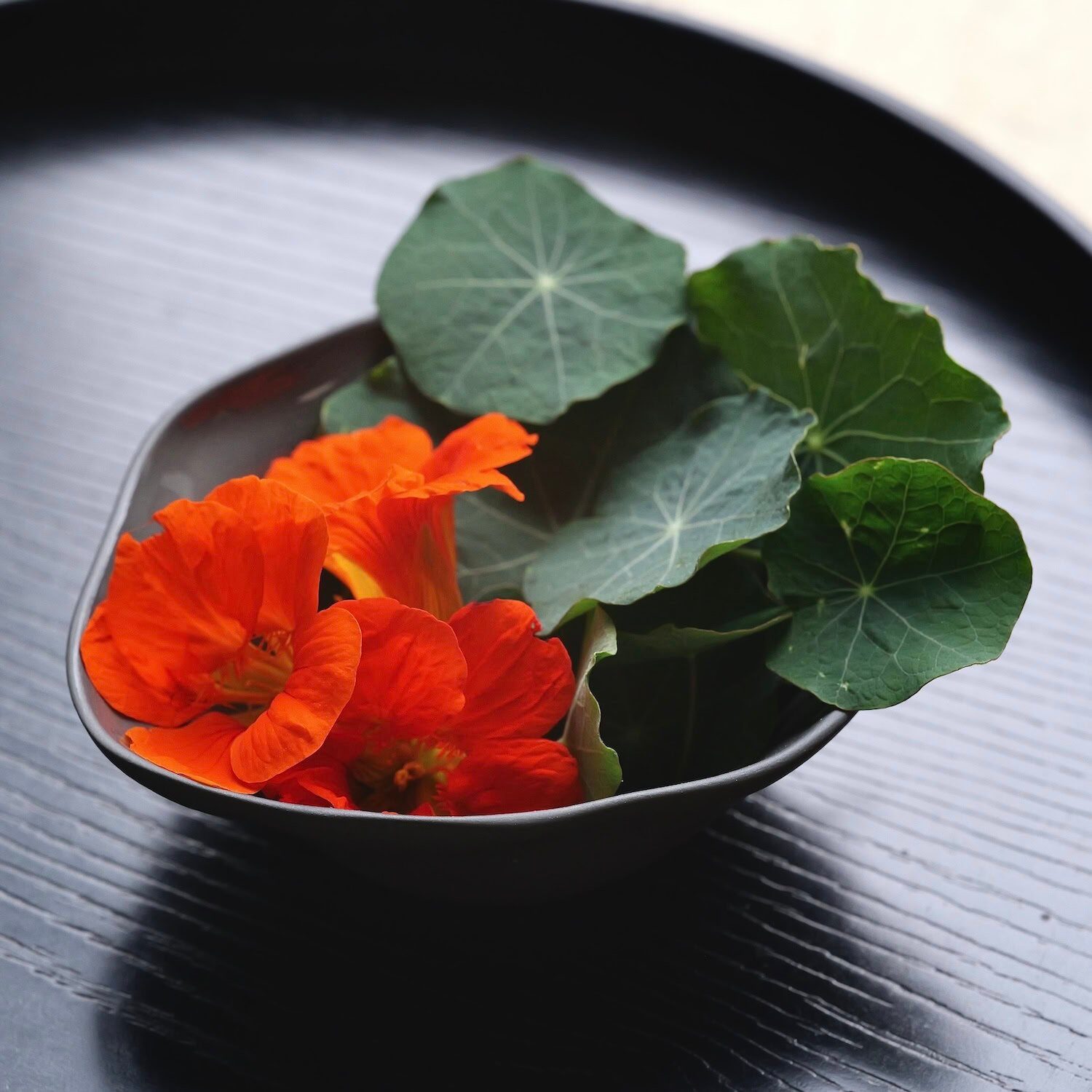Nasturtium
Nasturtium is the herb derived from the leaves, stems, and flowers of various species in the genus Tropaeolum, part of the Tropaeolaceae family. The seeds can also be used as a spice. There are approximately 90 species, but the two most widely used in cooking are Tropaeolum majus and Tropaeolum minus.

REGION OF ORIGIN
The Andes. Nasturtium originated in the diverse microclimates and rich soils of the Andean Mountain Range, reaching across Chile, Bolivia, Peru, Ecuador, and Colombia.
PART & COLOR
Many parts of the plant can be used. The flat, fan-like leaves are light green with a distinctive central vein system. The stems can be used similar to chives. The edible flowers come in many beautiful shades of yellow, orange, and red. The pale green seeds wrinkle and turn greyish brown when dried.
HARVEST
Nasturtiums are climbing herbs that are typically grown as annual plants in most climates. They can be harvested throughout the growing season (late spring to early autumn). The leaves can be clipped as soon as they form as their flavors are most intense when young and tender. Nasturtium flowers should be plucked in the morning when their petals are fully open. As the season progresses, the flowers fade and the seed pods form. They are best harvested as soon as they mature, when still green and soft, right before turning brown.

FLAVOR & AROMA PROFILE
CULINARY USES
Raw nasturtium leaves give a lively zest to salads, sandwiches, and pesto. They pair nicely with seafood, particularly as a striking, edible garnish for ceviche or grilled fish. They can also be sautéed, which mellows their peppery quality and makes them earthier. The flowers add an attractive and flavorful twist to salads, soups, and desserts. They can also be used to infuse vinegar, oil, butter, and honey with lovely flavors and colors.
The seed pods can be eaten raw and are best when young, light green, and soft. They are often pickled like capers to uplift sauces, dressings, marinades, and charcuterie boards. Nasturtium's originality and singular appearance are gaining momentum in modern cuisine everywhere.


